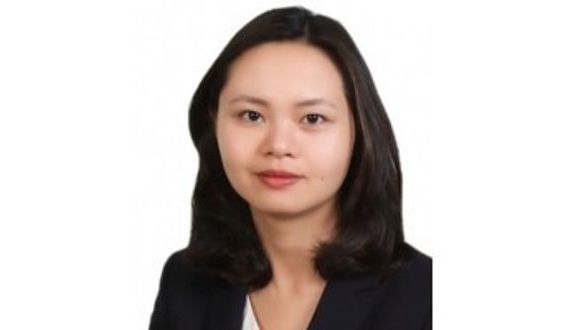Mon, 06 June, 2022
We are holding an event at our headquarters near Cambridge on 14 June 2022 on the topic of ‘Manufacturing and Material Challenges in Fusion and Big Science.’
Among the speakers we will be welcoming to the event is Vivian Lee, Development Engineer in the Reactor Technology and Divertor Group at Tokamak Energy Ltd.
Tokamak are a leading global commercial fusion energy company based near Oxford, UK, and Vivian will be speaking on the subject of ‘Challenges and Opportunities for Plasma Facing Components of Magnetic Fusion Systems.’
We took some time to find out more about Tokamak, Vivian’s role at the company and her planned presentation.

Hi Vivian, can you start by letting us know a little bit about the work of Tokamak Energy Ltd?
Tokamak Energy is aiming to provide a sustainable alternative to fossil fuel energy production. We pioneer the use of compact spherical tokamaks, which have been shown to outperform conventional tokamaks, with high temperature superconducting magnets. Our latest test device is ST-40, where we achieved plasma temperatures of 100 million degrees Celsius in early 2022. We continue to learn through our campaigns and R&D programmes in our pathway towards commercially-viable fusion.
What is your role at the company?
I am a Development Engineer in the Plasma Facing Components Team under the Reactor Technology Group. I am currently leading several technology development projects under the Advanced Modular Reactor Programme focused on the divertor component, the plasma exhaust in tokamak devices. My work encompasses advanced cooling solutions, plasma-material interaction and novel manufacturing techniques. I also manage in-house testing rigs and facilities.
Fusion energy is often seen as a breakthrough solution for energy generation, can you explain what the benefits are?
The realisation of commercial fusion power is a sustainable solution to the world’s energy needs due to the availability of fusion fuel, the reaction creating nuclear waste with short half-life in low amounts and importantly, the inherent safety in fusion energy production as the reaction is quickly self-arrested in the event of disruptions.
Despite the benefits of fusion, there are some challenges around the process, can you tell us more?
Tokamak Energy are already pushing ahead with our high temperature superconductor technology. In parallel, we are developing advanced materials and supporting technologies that can withstand extreme loadings in fusion reactors. There is undoubtedly much work ahead to develop and deploy fusion power – however, transformative capabilities such as additive manufacturing, may be revolutionary in our way of thinking about design and could accelerate development times. We continue to leverage our growing talent pool to develop near term and long-term solutions for commercial fusion.
Are we close to seeing the practical application of fusion for widespread energy generation?
Tokamak Energy’s roadmap aims to commission ST-E1 in the early 2030s, a conceptual fusion pilot plant design capable of electricity production and grid connection. This will be based on the learning from all prior test devices and technology as well as capability development programmes. ST40 is currently undergoing a series of upgrades following a successful campaign.
You are due to speak at our fusion and big science event – can you tell us a little bit about what we can expect from your presentation?
Tokamak Energy’s presentation for this event will be focused on challenges (and how we plan to overcome them!) surrounding plasma facing components.
We look forward to seeing you on 14 June, but before we go, is there anything you would like to add?
I’m looking forward to the other presentations and opportunities to have stimulating conversations with all other attendees.